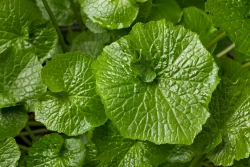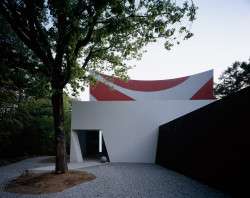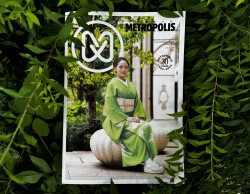
November 18, 2005
Land of calm
Get a glimpse of unspoiled Asia in the lush countryside of Laos
By Metropolis
Originally published on metropolis.co.jp on November 2005

Photos by Beth Alexander
Stretched like a sleeping cat along a bank of the Mekong, Vientiane is a city where time slips by like the river—slow and easy. We found it hard to believe, as we stepped off of the overnight bus from Bangkok, that this was the beating heart of a world capital. Where were the hoards of tuk tuk drivers and guesthouse owners who, anywhere else in Southeast Asia, descend the moment you step from the air-conditioned calm of the tourist bus? Where was the smog and the mayhem? Where were the engine growls, shrieking horns and chattering voices that, anywhere else, make up the soundtrack to life in a capital city? Vientiane is different: With more palm trees than buildings and a sky clearly visible without craning your neck, the Laotian capital leans more toward countryside than cityscape.
Standing in the main street at midday on a Monday, we could hear the birds and the cricket chorus before a lone moped cut through the calm. We turned off the main drag and were immediately enveloped in a world of green. Unchecked plant life spread over the verges and up the sides of the buildings. Slow games of bocce were played out in the street, and neighbors stood on porches to chat and look at the sky. Vientiane lives in the perpetual calm of a Sunday afternoon. Yet despite its tranquility, this diminutive city can still pick up the pace, and there are plenty of bars and restaurants around town, as well as a few clubs open late on the weekends.
Most of the outdoor action is centered around the river, where food stalls line the banks serving up sticky rice balls, grilled chicken and spicy green papaya salad. Not to be missed is an evening kicking back, sipping a cool glass of the famed Beer Lao, and watching the sun set over the Mekong.
However, a visit to Laos should never be limited to just one city. Unlike its neighboring capitals in Vietnam and Thailand, where it’s perfectly acceptable to spend a week wandering the streets, the markets and the sights, the real beauty of Laos lies in the landscape. It’s the journeys between the towns that leave a lasting impression, and whether you go by river or by road, the views never fail to deliver.

Heading north, we found the landscape stretched out into rolling mountain ranges saturated with green. Three hours in and we reached Vang Vien, a small town surrounded by sheer limestone cliffs rising up dramatically from the flats. Vang Vien has more of a tourist scene than Vientiane, with all sorts of water-based activities, the most popular of which is tubing. The technique is to hurl yourself into a large inner tube, launch yourself from the shore and let the current take you where it will. Dotted along the banks are makeshift bars where men with bamboo sticks and string quite literally fish for customers. Feeling somehow like a hippo in a tutu, your task is to flap around and make an attempt to maneuver yourself shoreward—all for the entertainment of those already safe on dry land with their beers.
Hitting the road again, the next must-see spot was Luang Probang, a UNESCO World Heritage site that’s home to a combination of French colonial architecture and a wealth of temples. Orange-robed monks amble along the streets among a constant trickle of tourists indulging in long sits by the river, massages and retail therapy in the silk-laden night market. The further north we traveled, the wilder the terrain became; air-conditioned buses gave way to rickety old boats, and we shared hitchhiked rides with sacks of cucumbers, chickens and bicycle parts. This is where travel really began to take time.
Tourism is only just getting a grip on Laos—in places it’s already quite advanced, but other areas remain relatively untouched. Thankfully the country is quite aware of this situation, and intends to stave off its negative effects by launching a number of eco-tourism projects, which should limit the impact of trekkers on the diverse hill tribe communities.
A journey through Laos is the ultimate escape from the rat race, and for nature-starved Tokyoites overdosed on concrete, neon and the teeming masses, it’s a profoundly refreshing and rejuvenating experience—like a cool glass of water on an August day in Shinjuku, it imbues you with a new sense of calm. Days can disappear just watching the landscape slip by or the light changing over the mountains. A sense of serenity creeps up and wraps itself around you, leaving you ready once more to face the frenetic 21st-century city we choose to call home.
There are no direct flights from Japan to Laos, so the best way to get there is to hop on a cheap flight to Thailand (Chang Mai or Bangkok) and continue on from there. An inexpensive overnight bus service also operates between Bangkok and Vientiane. The best months to visit Laos are November-February, when rain and sun strike a good balance. During the rainy season (June-October), the roads in much of the country are at the mercy of mudslides, but there’s plenty of river travel available and the countryside is at its most lush and beautiful. Fifteen-day visas are available upon arrival (make sure you bring some passport snaps); 15-30-day visas must be organized in advance. Contact the Embassy of Laos in Tokyo, at 03-5411-2291 or 03-5411-2292.
[geo_mashup_map]







